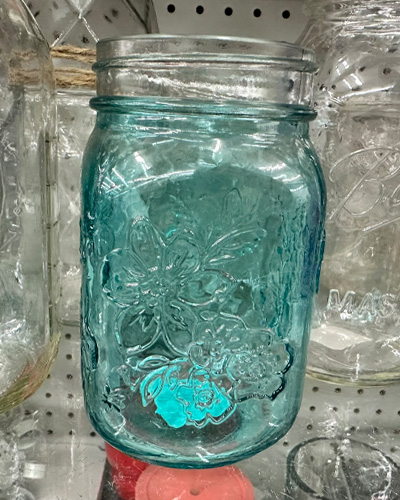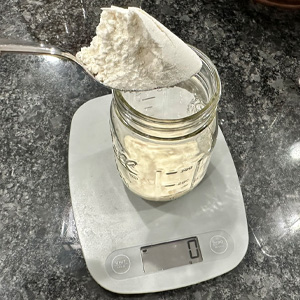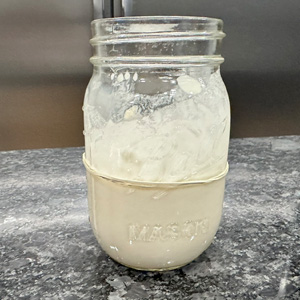
Starting a sourdough starter with Goodwill NCW from scratch is a wonderfully rewarding journey that not only connects you with the ancient art of bread making but also promotes sustainability and resourcefulness. Utilizing tools found at your local Goodwill NCW, like a pint or quart-size mason jar, food scale, rubber bands, and a spatula, you can embark on this journey with success! Here’s a comprehensive guide to kickstart your sourdough adventure.

Materials Needed for Your Sourdough Starter
Quart-Sized Mason Jar: Find a clean, quart-sized mason jar at your local Goodwill store. Make sure it’s thoroughly washed and dried before starting.
Food Scale: Hunt for a reliable food scale that measures in grams.
Sturdy Spatula: A strong spatula is necessary for mixing your sourdough starter. A silicone spatula is recommended for its durability and ease of cleaning.
Rubber Bands: Grab a pack of rubber bands to mark the growth of your sourdough starter. They’ll act as an indicator of your starter’s fermentation and growth process.
Starting Your Sourdough Starter
Mix Your Ingredients: Combine 100 grams of unbleached flour, we recommend using bread flour or unbleached all-purpose flour with 100 grams of room-temperature filtered water in your mason jar. Stir the mixture with your spatula until smooth.
Cover and Let It Sit: Loosely cover the jar with a cloth secured with a rubber band or a loosely fitted lid. Place it in a warm spot, away from direct sunlight.

Maintaining Your Starter
Daily Feedings: Starting on the second day, discard about half of the starter daily. Add 100 grams of flour and 100 grams of water to the jar. Use your food scale for precise measurements. Stir well with your spatula, ensuring to scrape down the sides of the jar.
Marking Growth
Use a rubber band on the outside of the jar to mark the level of your starter after each feeding. This visual aid will help you track the starter’s growth.
Observing
Watch Your Starter Grow: Over the next 5 to 7 days, your starter will become more active and bubblier. It should start to rise and fall after each feeding, indicating a healthy development.

Using and Storing Your Starter
Ready to Bake: Once your starter is doubling in size within 4 to 6 hours of feeding, it’s ready to use.
Storing
If you don’t plan to bake daily, you can store your starter in the refrigerator and feed it once a week. Allow it to come to room temperature before using it in recipes.
Creating a sourdough starter with Goodwill NCW from scratch using a mason jar and precise measurements is a testament to the simplicity and beauty of traditional bread making. With patience, care, and the right tools, you can cultivate a vibrant sourdough starter that will serve as the foundation for countless delicious breads. This process not only yields delicious results but also embodies sustainability, craftsmanship, and the joy of homemade bread.
